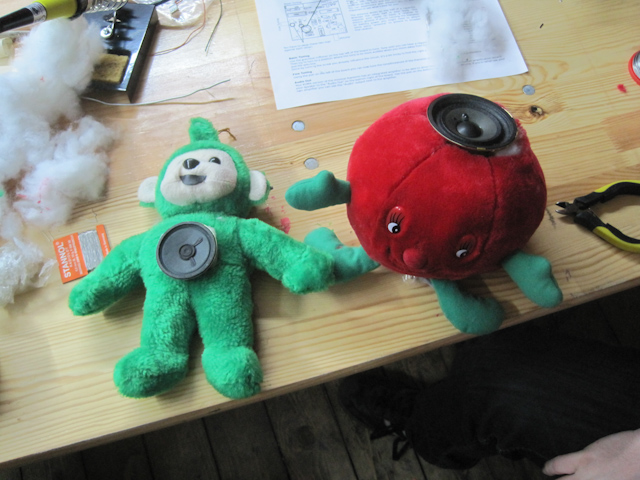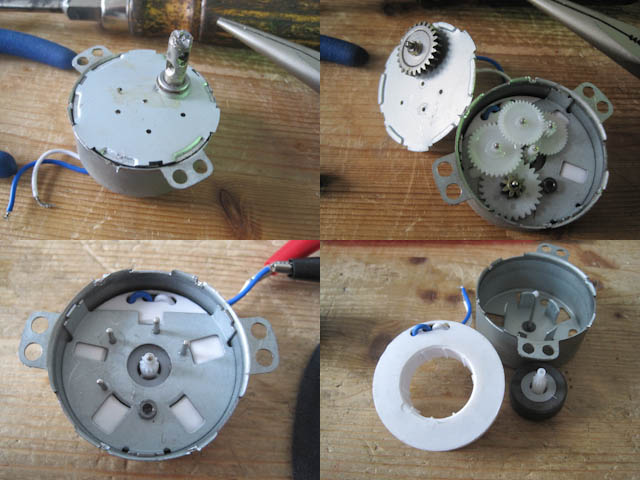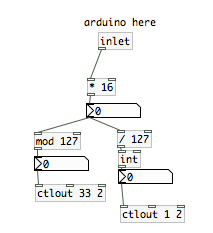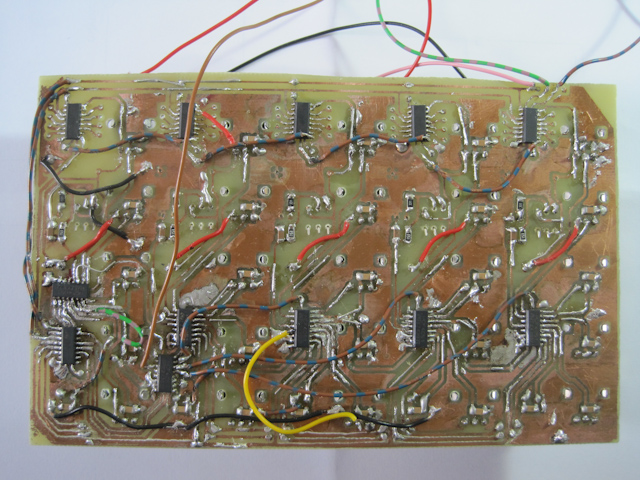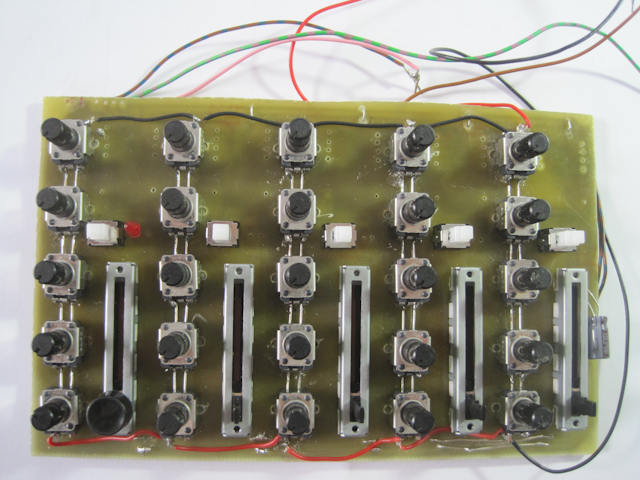I’ve continued on my Mixer project, adding 8 per channel as meters. Currently, each meter circuit consists of a 4094 register attached to a uln2003 transistor array. The idea behind that was that it’s actually possible to control each led individually this way. However, the wiring of these two is pretty space consuming and besides the two chips also each led would need its own series resistor. I tried tow hack myself around that by controlling the leds voltage with pwm from the arduino I use to control and read the mixer. Unfortunately this leads to the pwm leaking into the whole circuit and thus screwing with my fader readings. No good…
For the next version I will use an MC34063 instead. It takes an analog control voltage to light up up to 10 leds and already provides the series resistors inside. Since I will not use the pwm outputs of the arduino for anything else, it seems convenient. The 34063 is a bit pricey though (€1,35).
Apart from all that, the setup worked nicely and I’m looking forward to having it all save and sound in a case to actually start playing with it!

There was no space left on the board for the uln2003s, so they needed to be attached with cables. Sisyphean task...

This board is seriously overhacked...

The raw mixer...

...looks much nicer once you put a lid on it :)


